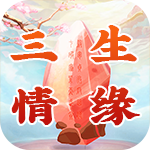1. 英語書信作文開頭結尾的萬能句型
You letter came to me this morning. I have received your letter of July the 20th. I'm writing to you about the lecture to be given next Monday. I'm writing to ask if you can come next week. How time flies! It's three months since I saw you last. Thank you for your letter. In reply to your letter about (the exhibition this year)…; Let me tell you that… 信件結尾常用語: Please remember me to your whole family. Give my best regards (wishes) to your mother. Best wishes. With love. Wish you a pleasant journey. Wish you success. Wish you the best of health. (luck) Looking forward to your next visit to China. Looking forward to the pleasure of meeting you. Expecting to hear from you as soon as possible. 閱路和應答: Go down this street Turn night/left at the first crossing It's about…metres from here You can't miss it In front of behind at/a the corner(不用in) Pass two blocks wish you good luck!。
2. 英語寫信格式開頭結尾常用語句.
英文書信不論是商業信、社交信或朋友間的通信,依據習慣,大體都有六部分組成。
即: 信頭(heading) 信內地址(inside address) 稱呼(salutation) 正文(body) 結尾語(complimentary close) 簽名(signature) 1.信頭(heading) 英語書信的信頭包括發信人的地址和發信的具體日期兩部分。信頭放在信紙的右上角,一般分行寫出。
要先寫發信人地址,再寫發信的日期。寫發信地址時依據從小到大的原則,即:先寫門牌號碼、街道名或路名,再寫區(縣)及所在市名稱,然后是省或州、郡名稱,最后再寫上國家的名稱。
日期的順序是先寫月份再寫哪一日然后是年份。需寫郵政編碼,郵政編碼寫在城市名稱后邊,用逗號隔開。
信頭不能越過信紙中間而寫到信紙的左上面。另外需要注意的是,通常在寫地址時,第一行寫門牌號和街名,第二行寫地區名,第三行是日期。
一般信頭每行末不用標點符號,但每行中間應用的標點不可少,城區名和郵政編碼之間,日月和年份之間要用逗號隔開。 信頭一般不要寫得太高,信頭的上面要留些空白。
信頭的書寫格式有兩種:并列式和斜列式。所謂并列式是指信頭各行開頭上下排列整齊。
而所謂斜列式是下一行開頭較上一行的開頭向右移一至兩個字母的位置。如: 并列式: 6P Park Ave. New York; NY 11215, U.S.A. December 1, 1999 斜列式: 6P Park AVe. New york, NY 11215, U.S.A December 1, 1993 2.信內地址(inside address) 信內地址包括收信人的姓名稱呼和地址兩部分。
社交的私人信件信內地址是省略的。信內地址的位置位于信頭的左下方,它的開始行低于信頭的結尾行,位于信紙中央的左邊。
信內地址先寫收信人的頭銜和姓名,再寫地址,地址排列次序同信頭一樣。信內地址的書寫格式也有兩種:并列式和斜列式。
一般來講,信頭和信內地址所用的格式總是保持一致的。標點符號的使用也與信頭一樣。
關于信內地址對收信人的頭銜和姓名的稱呼一般有以下幾種情況: 無職稱的男子用Mr.(加姓) 已婚的女子用Mrs.(加女子丈夫的姓) 未婚的女子用Miss 婚姻狀況不明的女子用MS. 博士或醫生用Dr.(Doctor) 有教授職稱的用Prof.(Professor) 總經理、校長、會長、總統用Pres.(President) 3.稱呼(salutation) 稱呼是對收信人的尊稱語,自成一行,與信內地址上下排齊。在美國用“My Dear”比用“D ear”還要客氣,而英國的用法恰巧相反。
對于一個陌生的人通信一般用“Dear Sir”或“D ear Madam”。另外需要注意的是稱呼后面用逗號。
4.正文(body) 正文是書信的核心部分。正文的寫作必須注意以下幾點: (1)正文從低于稱呼一至二行處寫起,每段第一行向內縮進約五個字母,轉行頂格。
正文 也采用并列式的寫法,即每行都頂格,但段與段之間中間要空出兩三行表示分段。 (2)對于非正式的書信,除客氣外,沒有什麼一定的規則。
但究竟怎樣的措辭,也應事先 想好。 (3)對于非常正式的書信,要知道開頭句是很重要的。
另外,信的內容中的每個段落 ,只能有一個中心思想,這樣看信的人可以清楚、明白你所要表達的內容。為了表達的清楚,還要盡可能地用短句,少用長句、難句。
段落也宜短不宜長,尤其開頭和結尾兩段更應簡短。 (4)潦草的字同不整潔的衣服一樣不雅觀,書寫一定要整齊規范。
拼寫也不能出現錯誤。 對拿不準的詞一定要求助于字典。
(5)凡正式的書信,我們應將該信的全部內容寫在一張信紙上。若一張不夠,可用同樣質 地大小的信紙繼續書寫,但若僅多出一兩行則設法排得緊些放在一張上,或平均分為兩頁也好。
信要寫得美觀大方。 (6)正式的書信,詞語要莊重,決不可用俗語和省筆字。
5.結尾語(complimentary close) 結尾語就是結尾的客套語。一般寫于正文下空一兩行后,從信紙中央處起筆寫,第一個字母大寫,末尾用逗號。
結尾語措辭的變化依據情況而定,通常有以下幾種: (1)寫給單位、團體或不相識的人的信用: Yours (very) truly,(Very) Truly yours Yours (very) faithfully,(Very) Faithfully yours, (2) 寫給尊長上級的信可用: Yours (very )respectfully, Yours (very )obediently, Yours gratefully, Yours appreciatively, 也可以將Yours 放在后面。 (3)寫給熟人或朋友的信可用: Yours,Yours ever,Yours fraternally, Yours cordially,Yours devotedly, 也可以將Yours 放在后面。
(4)給親戚或密友的信可用: Yours,Yours ever,Yours affectionately, Yours devoted friend, Lovingly yours, Yours loving son (father,mother,nephew……), 以上各種情況 yours 無論放在前面或是放在后面都行,但不可縮寫或省去。 6.簽名(signature) 簽名是在結尾客套語的下面,稍偏于右,這樣末一個字可以接近空白而和上面的正文一樣齊。
簽名當用藍鋼筆或圓珠筆,不能用打字機打。簽名上面可以用打字機打出所在公司單位名稱,下面也可打出職位。
寫信人為女性,則可在署名前用括號注明Mrs.或Miss。 簽名的格式不能常變換。
如一封簽G·Smith,另一封簽George Smith,第三封用G·B·Smit h。男子簽字前不可用Mr.、Prof.或Dr.字樣。
(二)英文書信信封的寫法(superscription) 英文書信信封的寫法同中文也不一樣。具體來講。
3. 【英語信件作文常用句子開頭,結尾,段落過渡.一句漢語一句英語】
對于英語信件而言:1,對于開頭部分,通常來說都是一些祝福型的話.Wish you have a nice day / good day to you / glad to contact you etc.2.對于結尾部分,通常都會是一些希望收到對方的回復.Looking forward your early reply / I am waiting for your reply soon.etc.3.對于段落過渡,那就選用一些連詞吧,有并列,轉折等連詞,Such as and ,but ,otherwise ,further more,in addition .etc .希望可以采納建議,。
4. 英語讀書筆記20篇開頭句結尾句好詞好句
就是20篇英語文章的開頭結尾及佳句嗎?1 Title: what kind of transportation you would choose開頭:If I need to travel to a place 40 miles away from my home, there are a number of different modes of transports I could untilize, namely the bus, a car, or the train.結尾:Overall, I think that the car is the best qption, if it is available. The car is conveinent and comfortable. However, the bus and the train are both good options if a car is not available.佳句:Taking a car is an excellent option, assuming one can afford a car. Subway trains are never subject to traffic jams, as they usually run underground.2 Title: At the edge of the sea開頭:The shore is an ancient world, for as long as there has been anearth and sea there has been this place of the meeting of land and water.結尾:The beauty of the reflected images and of the limpid pool itself was the poignant beauty of things that are ephemeral, exixting only until the sea should return to fill the little cave.佳句:Across the bay the moon was luminous disc in the western sky, suspended above the dim line of distant shore the full August moon, drawing the tide to the low, low levels of the threshould of the alien sea world. Occasionally a swell. stronger than the rest, rolled smoothly over the rim and broke in foam against the cliff.3 Title: the missing blue flower開頭:Each spring brings a new blossom of wildflowers in the ditches along the highway I travel daily to work.結尾:And yes, if I see the blue flowers again, you can bet I'll stop and transplant them to my wildflower garden.佳句:I do believe that God has given us some time left to plant some wonderful memories that will bloom every year for us.There is one particular blue flower that has always caught my eye.4 標題:a divine accident開頭:I'm as sure-footed as they come. That's why I was so surprised when I stumbled on a subway grate on the morning of December 5, 2004.結尾:My daughter Olivia has drawn my favorite conclusion: “Mommy, I think an angel pushed you.”佳句:As everyone fussed and fretted, I remained calm. Six weeks of bed rest followed, and my healthy girls arrived close to their due date.5 標題:明天來更。
都是手打的、自己整理的。
5. 高考英語書信作文萬能開頭結尾,典型句子
開頭:
1.How is it going? 最近怎麼樣?
2.I am glad to receive your letter.很高興收到你的來信。
3.You asked me about(+problem question 等),now let me give you some advice.你在來信中詢問我。.,現在,讓我給你一些建議。
4.It has been a long time since we met.我們很久沒見面了
結尾:
1.I am looking forward to receiving your letter.我期待著你的來信。
2.Thank you in advance.提前謝謝你。
3.Please wirte to me as soon as possible.請盡快回信
4.Good luck |Best wishes.祝你好運
這些都是我們平常背的,希望有幫助。
6. 考試時英語寫信作文一般可以用到的句式,好詞,好句,還有英語寫信
正式信件里要注意:1、不要有縮約式,如:I'd like to 。
2、不要有口語,如:How cool
3、不要開玩笑(這個不好舉例)
4、結尾處用:yours sincerely/faithfully而不是yours(還有,補充下,在正式信件中也可以寫truly.)
寫給朋友的話,可以輕松一點。
1.I haven't seen you since。how are you ?
2.I'm missing you
3.Can you tell me 。
4.I think that 。
5.I look forward to hearing from you soon
這句比較百搭。可以用于信尾:期待你的回信。
比較親近的可以以cheers/yours結尾
7. 英語 書信 開頭 結尾
一般就是Dear, 除非寫給不認識的人,那用 Dear Sir/Madam, 或者 To whom it may concern,.
Yours, Yours Sincerely, Yours Faithfully, 沒什麼大區別可以互相替代,只是字面意思有略微不同但是從風俗習慣的角度而言是沒有區別的,Yours 相對沒那麼正式,另外兩個非常正式。
什麼樣的人都可以用,但是一般朋友寫信不一定非要用,因為不正式,正式場合比如給老師或者陌生人等寫信就一定要寫 大寫開頭 Yours Sincerely 或者 供訂垛寡艸干訛吮番經Faithfully.
應該是 Best Regards, 復數,或者直接 Best, (下一行名字),或者Regards, (下一行名字),或者 Best Wishes, (下一行寫上你的名字),這些相對casual一點,一般給朋友寫信,或者寫email用得比較多。
總結:
Dear _________,
·
·
·
Best/ Best Regards/ Best Regards/ Best Wishes/,
_______________
這個格式是非正式場合用的。
Dear Sir/Madam, / To whom it may concern,
·
·
·
Yours/ Yours Sincerely/ Sincerely Yours/ Yours Faithfully,
______________________
這個格式是正式場合用的。

















